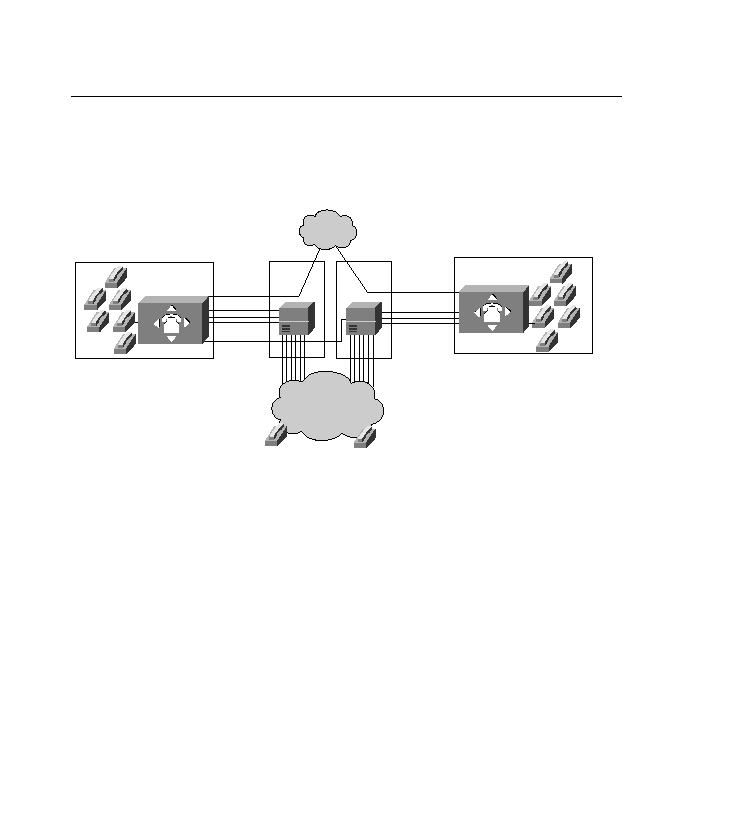
the PBX to the local exchange carrier, and then to a tandem switch. Then the connection is made
to an interexchange carrier's point of presence.
other design issues that have been discussed throughout this book.
places voice over data. The cost savings result from not having to run a separate network for
voice and a separate network for data. For the design to be considered a success, the voice over
data network must successfully deliver the quality and performance of the existing voice
network. Data and voice networks were designed with different objectives. A traditional data
network allows and expects bursty data flow. Data comes in packets and grabs as much
bandwidth as it can at any given time. Data networks tolerate bursty data flow and first-come,
first-served access. In addition, the data rate adapts to network conditions and can tolerate small
delays.
need a reserved amount of bandwidth. They don't need much; sometimes as little as 8 K is
enough. Whatever they need must be available during the duration of the call.
traffic is slow and delayed, however, the result is unacceptable. If voice traffic runs over a
100s
100s